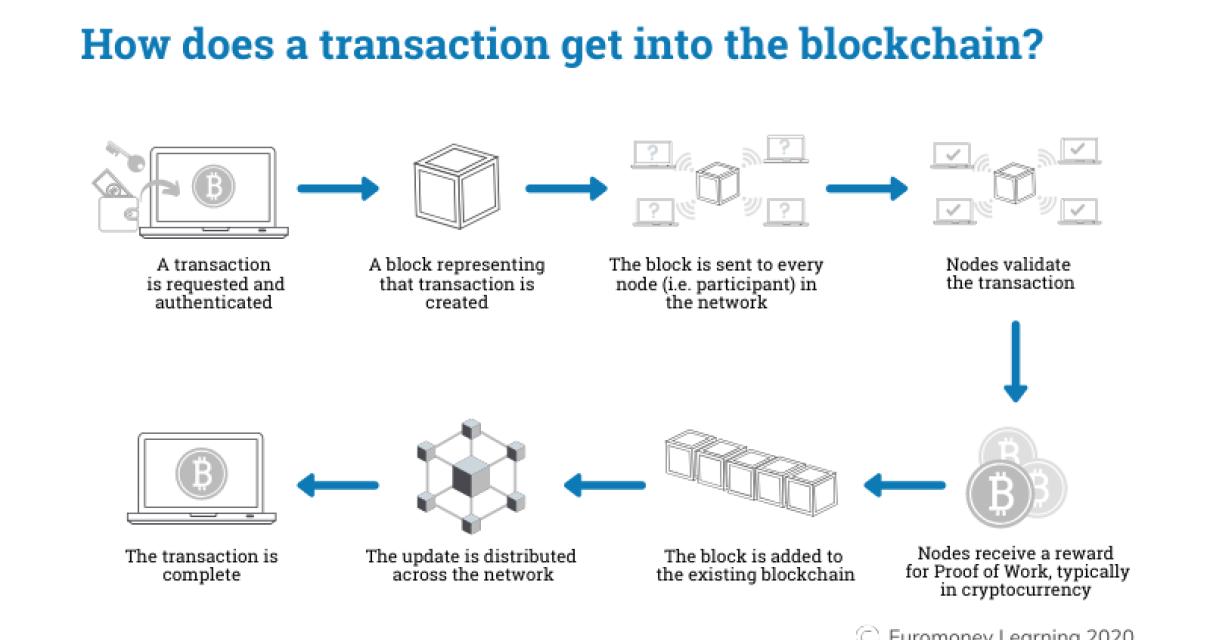A Beginner's Guide to Blockchain Technology
Blockchain technology is a distributed database that maintains a continuously growing list of ordered records called blocks. Each block contains a cryptographic hash of the previous block, a timestamp, and transaction data. Bitcoin and other cryptocurrencies are based on blockchain technology.
The Basics of Blockchain Technology
A blockchain is a digital ledger of all cryptocurrency transactions. It is constantly growing as "completed" blocks are added to it with a new set of recordings. Each block contains a cryptographic hash of the previous block, a timestamp, and transaction data. Bitcoin nodes use the block chain to distinguish legitimate Bitcoin transactions from attempts to re-spend coins that have already been spent elsewhere.
Bitcoin nodes use the block chain to distinguish legitimate Bitcoin transactions from attempts to re-spend coins that have already been spent elsewhere.
How Blockchain Technology Works
Blockchain technology is a distributed database that allows for secure, tamper-proof transactions. Transactions are verified by network nodes and then added to a blockchain ledger. This ledger of transactions is constantly growing as “completed” blocks are added to it with a new set of recordings. Each block contains a cryptographic hash of the previous block, a timestamp, and transaction data. Bitcoin, Ethereum, and other blockchain-based cryptocurrencies are built on this technology.
The Benefits of Blockchain Technology
There are many benefits to blockchain technology. One of the most important is that it allows for secure, transparent and tamper-proof transactions. This makes it ideal for use in a variety of applications, including financial services, supply chains and the internet of things.
Another benefit is that blockchain technology is highly resistant to cyberattacks. This is because it uses a distributed ledger system, which makes it difficult for hackers to penetrate.
Finally, blockchain technology is often faster and more efficient than traditional systems. This is because it uses a peer-to-peer network to process transactions, which eliminates the need for a third party.

The Future of Blockchain Technology
Blockchain technology has the potential to revolutionize the way we do business and interact with the world around us. Here are some of the most important ways that blockchain could impact the future:
1. Increased transparency and security
One of the most important benefits of blockchain technology is its ability to create a more transparent and secure system. Transactions are verified by network nodes and recorded in a public distributed ledger, which makes it difficult for anyone to tamper with the data. This increased transparency and security could lead to increased trust between businesses and their customers, as well as increased security for online transactions.
2. Improved efficiency and reduced costs
Another benefit of blockchain technology is its potential to improve efficiency and reduce costs associated with traditional systems. For example, blockchain could be used to track the movement of goods throughout the supply chain, eliminating the need for multiple parties to verify information. This could lead to significant reductions in costs and delays in the delivery of goods.
3. Increased access to financial services
One of the key benefits of blockchain technology is its ability to provide increased access to financial services for those who are unable to use conventional systems. For example, blockchain could be used to facilitate payments between individuals and companies without the need for a third party such as a bank. This could lead to increased access to financial services for low-income individuals and small businesses, as well as increased transparency and security for transactions.
4. Increased transparency and accountability in government
One of the key benefits of blockchain technology is its ability to increase transparency and accountability in government. For example, blockchain could be used to track the movement of funds within government agencies, ensuring that money is being spent wisely. This could lead to increased public confidence in government and a reduction in corruption.
5. Improved tracking of food and drugs
Another potential application of blockchain technology is its ability to track food and drugs throughout the supply chain. For example, blockchain could be used to monitor the quality of food products as they move from farm to store, ensuring that they are safe and reliable. This could help to reduce the incidence of food fraud and improve the safety of food products.
Applications of Blockchain Technology
Bitcoin
Bitcoin is the first and most well-known application of blockchain technology. It was created in 2009 by an anonymous person or group of people under the name Satoshi Nakamoto. Bitcoin is a digital asset and a payment system invented by Satoshi Nakamoto. Transactions are verified by network nodes through cryptography and recorded in a public dispersed ledger called a blockchain. Bitcoin is unique in that there are a finite number of them: 21 million. They can be exchanged for other currencies, products, and services.
Ethereum
Ethereum is a decentralized platform that runs smart contracts: applications that run exactly as programmed without any possibility of fraud or third party interference. Ethereum uses a public blockchain to record transactions and to control the creation of new Ethereum tokens. Ethereum is growing quickly, and could become the second biggest cryptocurrency after Bitcoin.
Litecoin
Litecoin is a cryptocurrency similar to Bitcoin but with less processing power. It was created in 2011 by Charlie Lee. Litecoin is also open source and has a faster block generation time than Bitcoin.